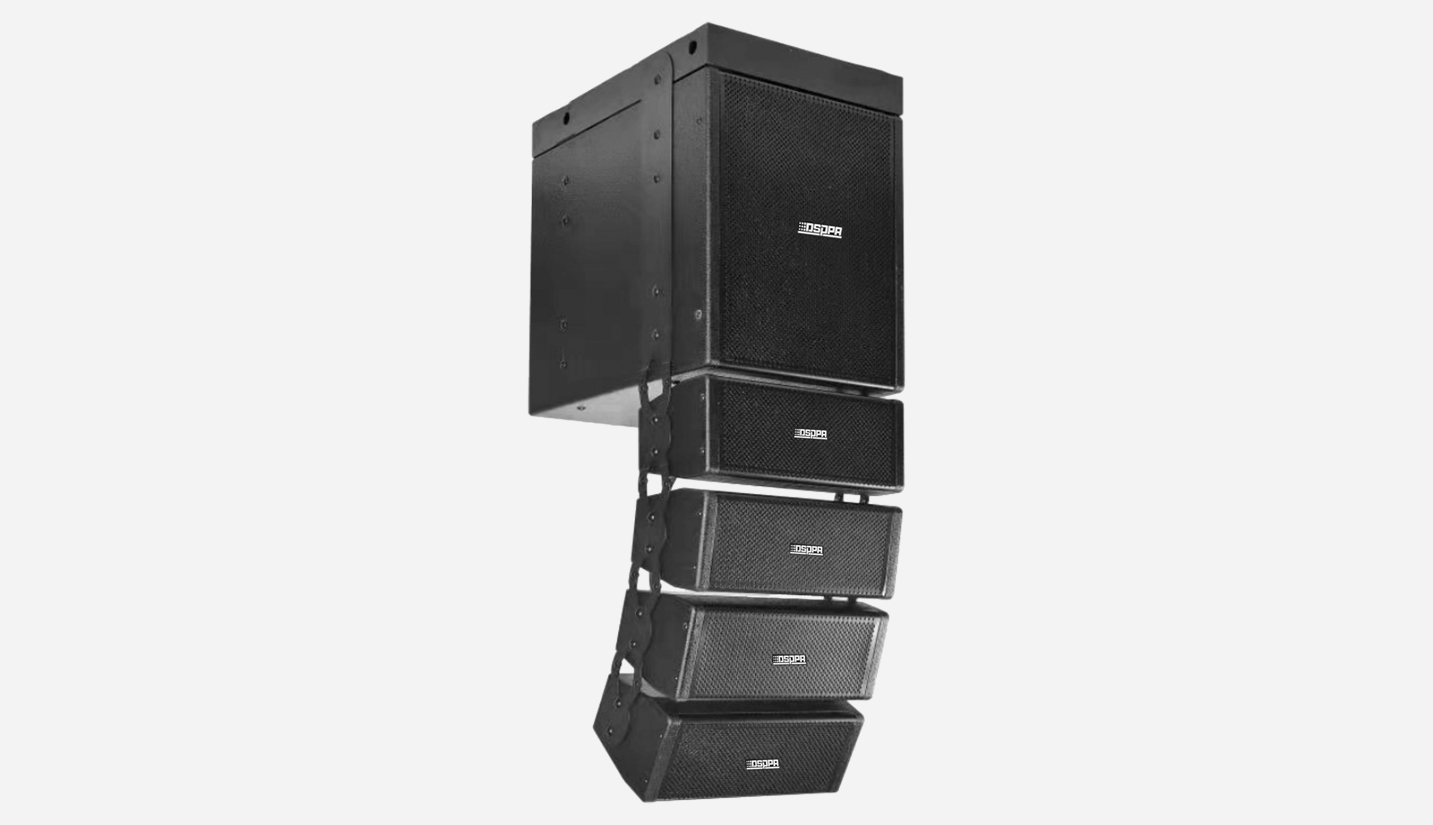
The core of the active array speaker is the built-in amplifier circuit, which can directly receive audio signals and amplify them, providing louder volume and a more comprehensive sound performance. Compared to passive speakers, using an active array speaker eliminates the need for additional amplifier equipment and cable connections, while offering better sound quality and stability. This article will explain the connection method for the active array speaker and the setup of the mixing console.

An active array speaker is an audio device characterized by its arrayed arrangement of horns. It is typically made up of several cabinets, each equipped with an amplifier, allowing it to directly connect to audio signals without the need for a separate amplifier.
When connecting an active array speaker, an XLR signal cable or a 6.35mm plug cable is generally required to connect the output port of the main speaker to the input port of the front-end audio equipment or mixing console. The output ports of active array speakers may vary depending on the model, so it is important to choose the appropriate type of connection cable based on the specific situation.
Adjusting Volume
After the active array speaker is properly connected, the next step is to adjust the volume to an appropriate level for the live music performance or speech. When adjusting the volume, start by setting it to 0, then power on the equipment, gradually increase the volume until the desired level is reached. It is essential to adjust the volume to an appropriate level, not too loud or too soft, with a recommendation to keep it in the moderate range.
Adjusting Sound Effects
The sound effect settings determine the clarity and quality of the sound. When adjusting sound effects, you can modify parameters like treble, midrange, and bass to achieve the desired sound for different situations. The specific adjustment methods are as follows:
Treble Adjustment: Typically, the treble adjustment range is ±15dB. It should be set according to the needs of the venue.
Midrange Adjustment: Midrange is the core of music, and it should be adjusted based on the characteristics of the instruments.
Bass Adjustment: Bass plays a key role in the musical presentation and should be adjusted according to the needs of the venue.
When adjusting the sound quality, you can choose different tones, equalizers, or effects based on your preferences or the situation.
Setting the Equalizer
The equalizer is used to adjust the high and low frequencies of the audio. During the balancing adjustment, you should adjust the values of different frequency bands in the equalizer based on the environment of the audio equipment to ensure the best possible sound performance. You should also check the balance between the left and right channels of the speakers by playing some music and listening to whether the sound from both channels is balanced.
In summary, the active array speaker offers a wider range of applications and superior sound quality compared to passive speakers. It is also very convenient and practical to use. In practice, adjustments to the active array speaker are required based on the specific needs of the venue to meet different requirements.